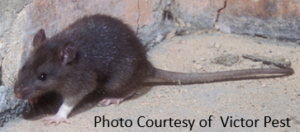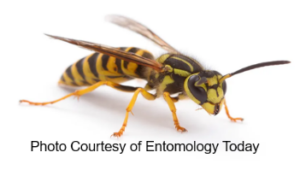Rats in the Facility

A client of RK Environmental Services (RKE) had existing rat activity. Through a quick survey, the rat species was identified as the black rat (Rattus Rattus), also known as the roof rat, ship rat, or house rat.
The RKE team immediately began mitigation strategies through the use of glue trays. The trays were placed in strategic locations and over the course of several weeks more than 30 rats had been removed. The reports of rat sightings were decreased soon after and within months the reported sightings were nonexistent.
As time passed, the rats would make a return. To combat the new influx of this rodent, additional snap traps and glue trays were installed and monitored. The Roof Rat got its name from its tendency to find shelter in the upper parts of buildings so the placement of some of the control devices were placed in upper portions of the building, secured as necessary, to prevent traps and trays from falling. Wall panels were also removed to allow for the placement of traps and trays in the walls themselves.
RKE’s Fumigation Manager was consulted to determine if the next course of action would be to fumigate the facility. The facility accepted the feedback but did not have the capital to invest in a fumigation. Additional RKE personnel were brought in to assess and collaborate on the next steps to avoid fumigation. A long term plan was developed and implemented with exemplary results.
Since the collaboration meeting the RKE team had installed over 100 T-Rex rat traps and 30 remote sensing T-Rex traps in the ceiling voids where accessible. The rodenticide on the exterior was changed from one active ingredient to another to reduce the risk of rodenticide resistance which can occur when multiple generations of rodents are exposed to the same materials. The change may also make the rodenticide more palatable for the rats.
Since implementing the new strategy, the facility has seen a drastic reduction in catches and sightings with no resurgence of activity.
Take Away Tips
• Collaboration & cooperation are essential in rodent control
• There are multiple approaches to solving a pest problem
• Proper Identification of pest is crucial
• Roof Rats require devices be placed both high and low
Submitted by: Kevin Waltrip
Service Supervisor
RK Environmental Services
The Yellow Jacket
Order: Hymenoptera Family: Vespidae Genus: Vespula Species: malculifrons, vulgaris & squamosa

The three most common types of yellowjackets are the Eastern Yellowjacket (Vespula malculifrons), the common Yellowjacket (Vespula vulagaris), & the Southern Yellowjacket (Vespula squamosa). Their common name is derived from the typical black and yellow pattern. In the Eastern part of North America, Vespula malculifrons is commonly found along with Vespula squamosa. However, Vespula squamosa is also found in parts of Mexico and Central America. Vespula vulgaris is found throughout most of the United States. These species of insects are considered social and live in colonies and/or nests consisting of hundreds to thousands of insects. They are considered beneficial insects but when their nests are located in unwarranted areas, they’re now a viable problem and potential threat to the public.
The adult workers are approximately ⅜ – ⅝” (10-16 mm) long contingent of the species. The Queen of the colony measures 25% longer in length. The abdomen is banded with yellow and black. Other species may contain white and black markings as well as red. Queens and workers may be separated by abdominal patterns; males have seven abdominal segments while females have only six. While at rest, their wings are folded longitudinally. The pronotum (section of the insect’s body directly behind the head) appears to be triangular when viewed laterally.
Adults are represented by workers that are sterile females, queens, and males who come from unfertilized eggs. Colonies are founded in the spring by a single queen that mated the previous fall and overwintered as an adult. The nests they construct may be aerial or terrestrial (ground nest) depending upon the species. Some species may construct both types of nests. Regardless of location, each nest is a series of horizontal combs surrounded by a paper envelope. During the Spring is when the overwintered queen will lay one egg within each one of the 30 to 55 cells, which are within the nest. The queen will proceed to feed the larvae arthropod protein material and nectar. Thirty or so days later, the first group of workers which is 5 – 7 on average will emerge. Upon emerging, the workers will now begin to take over all of the work with but the egg laying. On average a nest may consist of 2,000 to 6,000 cells. Nests of this size will have 1,000 to 4,000 workers at its peak. It is possible for nests to contain multiple queens, tens of thousands of workers, and also have several million cells. Yellowjacket activity is typically observed during the Summer months. As the season progresses, larger reproductive cells are constructed where the queen will be reared and the males are reared within old worker cells. It is at this time, the population within the nest is decreasing. Newly emerged queens and males will vacate the nest to mate with one another. Inseminated females are the only ones that can hibernate and survive the Winter months. Eventually, the original queen, workers, and males will die.
Contingent on the species, it is the queen who will decide which nest she will pick. Either aerial or terrestrial. The majority of species are subterranean nesting. Those that do not have the ability to nest within the ground can nest within a void of a structure. When nests are disturbed, Yellowjackets can become quite aggressive. Normally, they are very slow to sting but when they do, it can be repetitive.
Those who are allergic and/or hypersensitive to these insects should refrain from performing applications. For those who are not, it would still be advantageous to have an Allergy Emergency Kit available in the event there was an emergency at the time of the actual application. When assessing for yellowjackets and the type of nest in which they created, the “Best Practice” would be to begin by donning the necessary Personal Protective Equipment (PPE). This shall include long sleeves & pants, socks, slip-resistant safety boots, safety glasses, thick work gloves, a bee suit, or at minimum a veil to protect the head and facial area. For subterranean nests, the opening or entrance to the nest needs to be located. Approved insecticidal dust can be utilized with the use of either a beepole or a duster with an extended handle. The specimen label of the material being used will dictate application instructions.
For nests located with a void, insecticidal dust can be applied to the entrance opening or an approved pyrethroid aerosol insecticide can be utilized. Once completed, the opening should be appropriately sealed. Over the course of the next several days, the wall void should be opened for removal of the nest and cleanout to prevent the development of other pests such as Dermestid Beetles. If the wall void can not be opened, an approved residual material should be utilized as per the label. For situations where a physical nest has not been observed but activity is present, baited traps can be utilized to reduce population levels. An example would be an exterior refuse area. Traps should be checked regularly, cleaned as well as rebaited throughout the season to yield the best results.
Take Away Tips
- Optimum time to treat a nest is at night
- Never seal the opening to an active nest prior to application as this compounds the problem
- If in need of a ladder, fiberglass and the appropriate ladder safety protocols are required
Remember: “The Label is the Law”
Submitted by: Joe Romito, ACE
Sr. Food Safety Consultant
Comprehensive Food Safety, LLC






